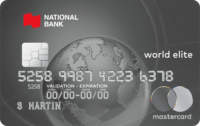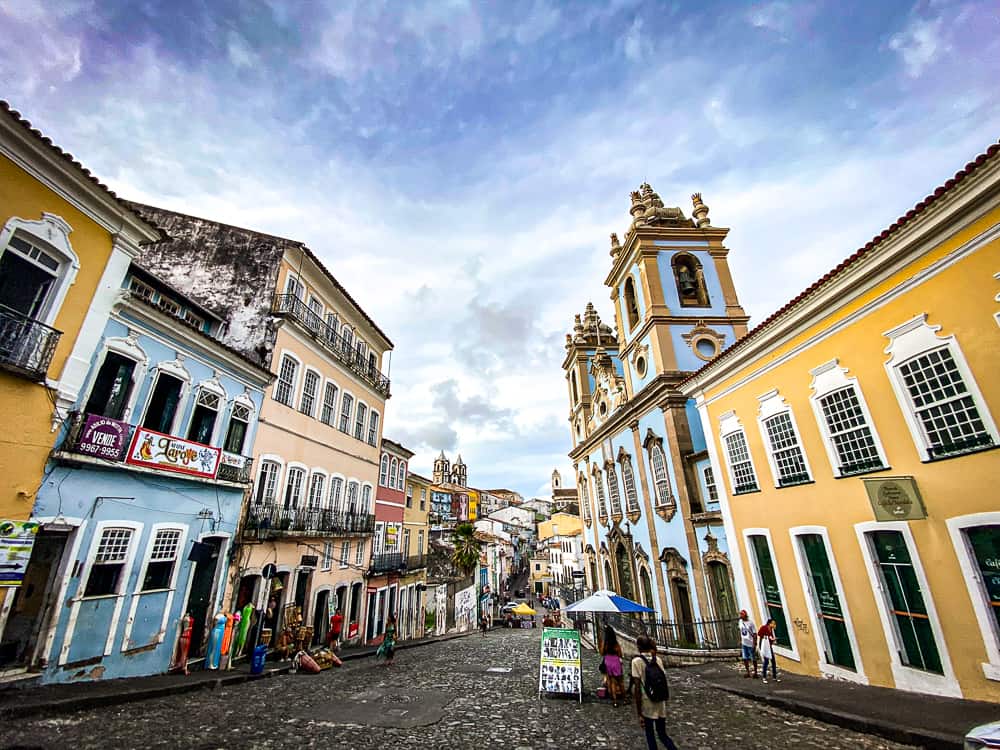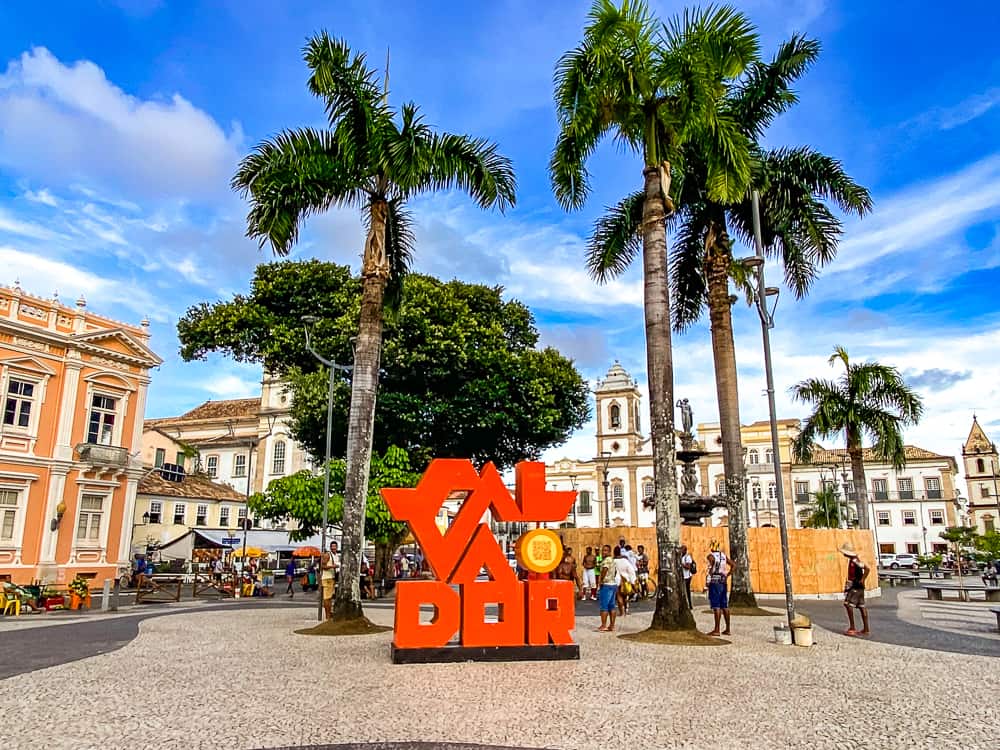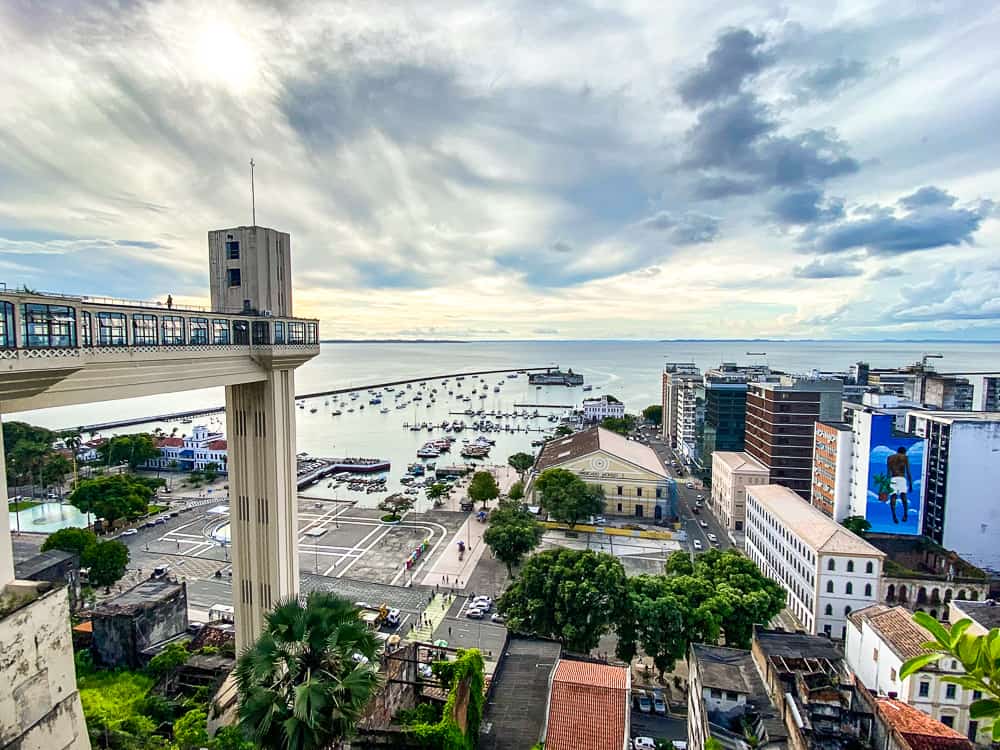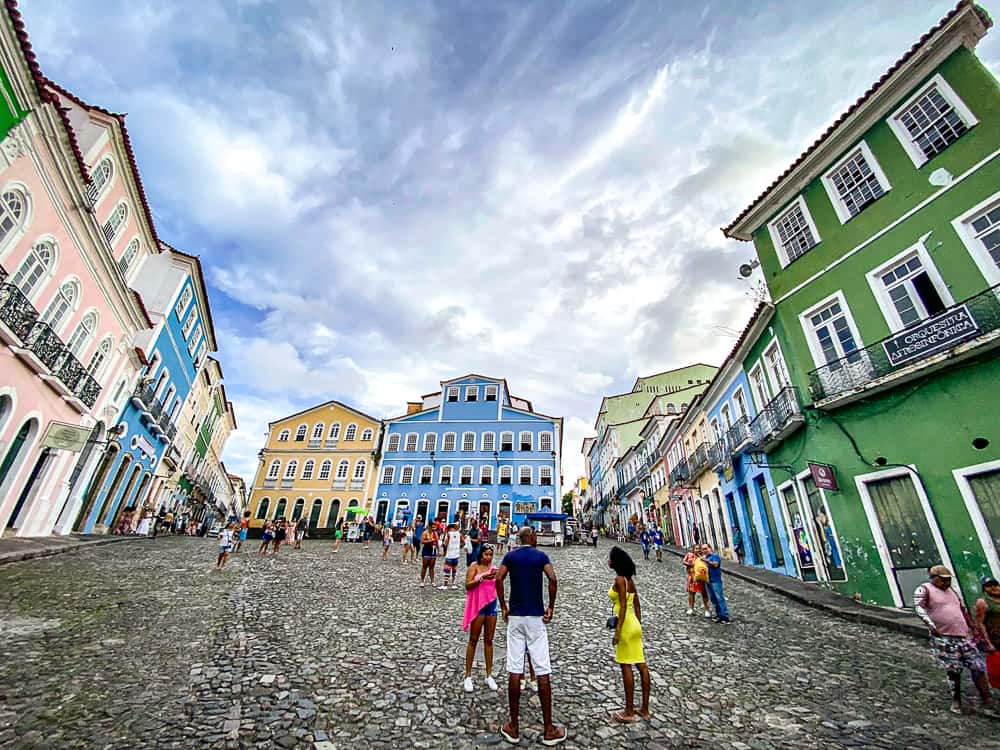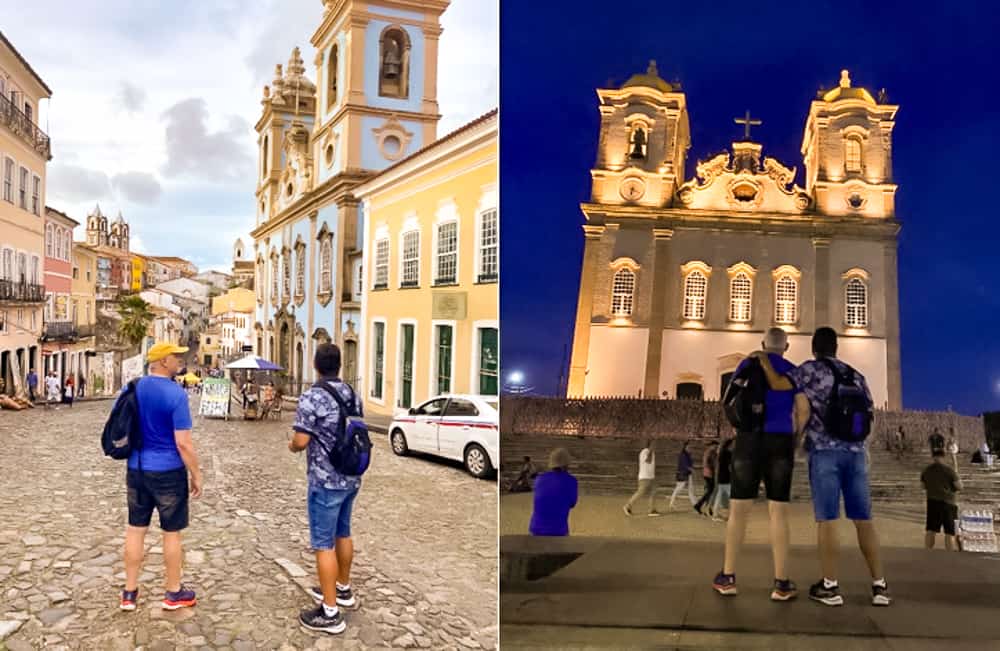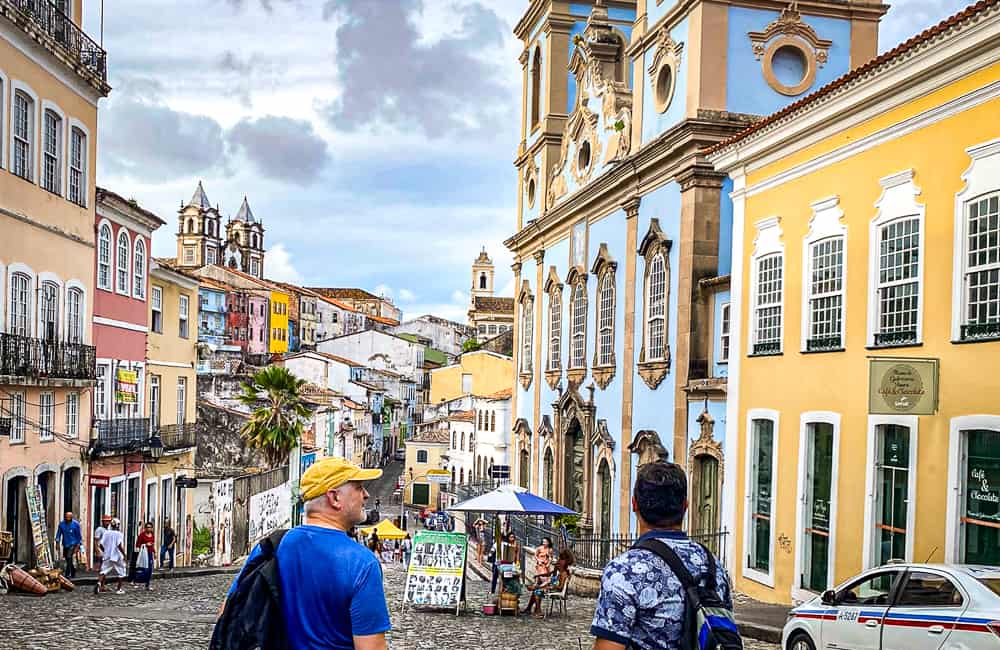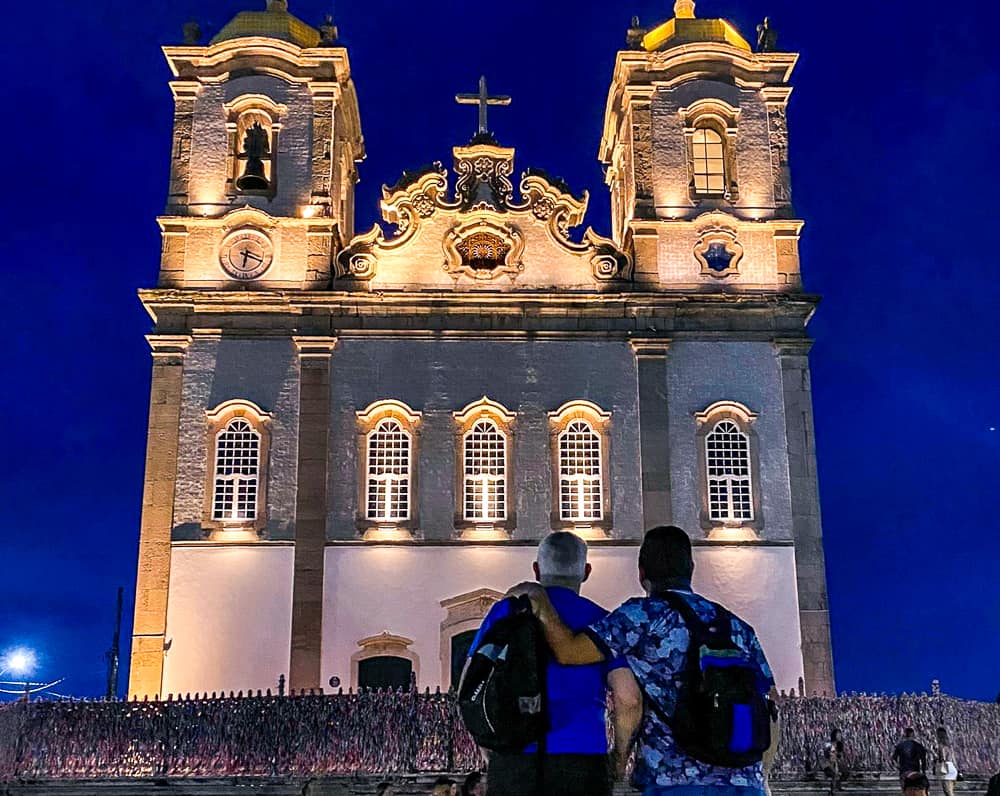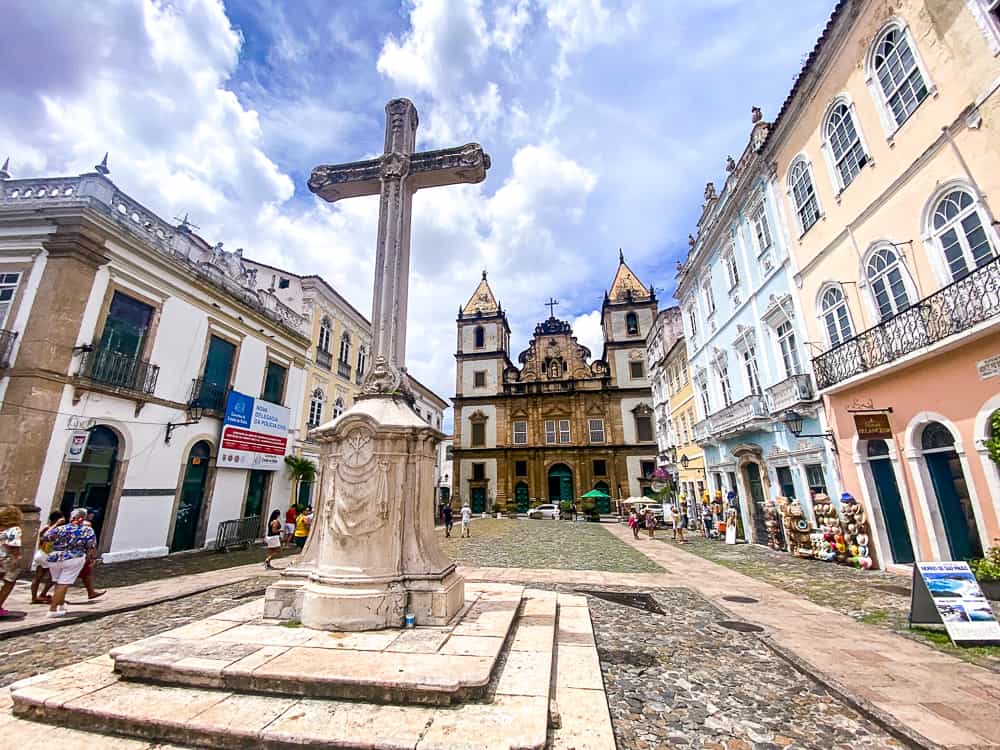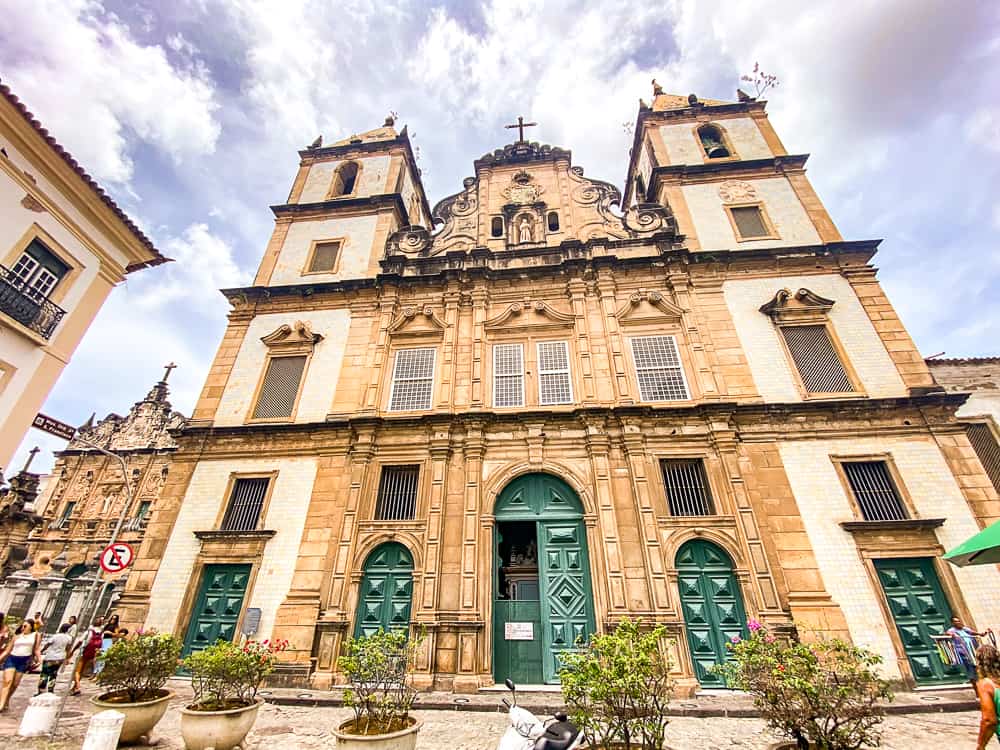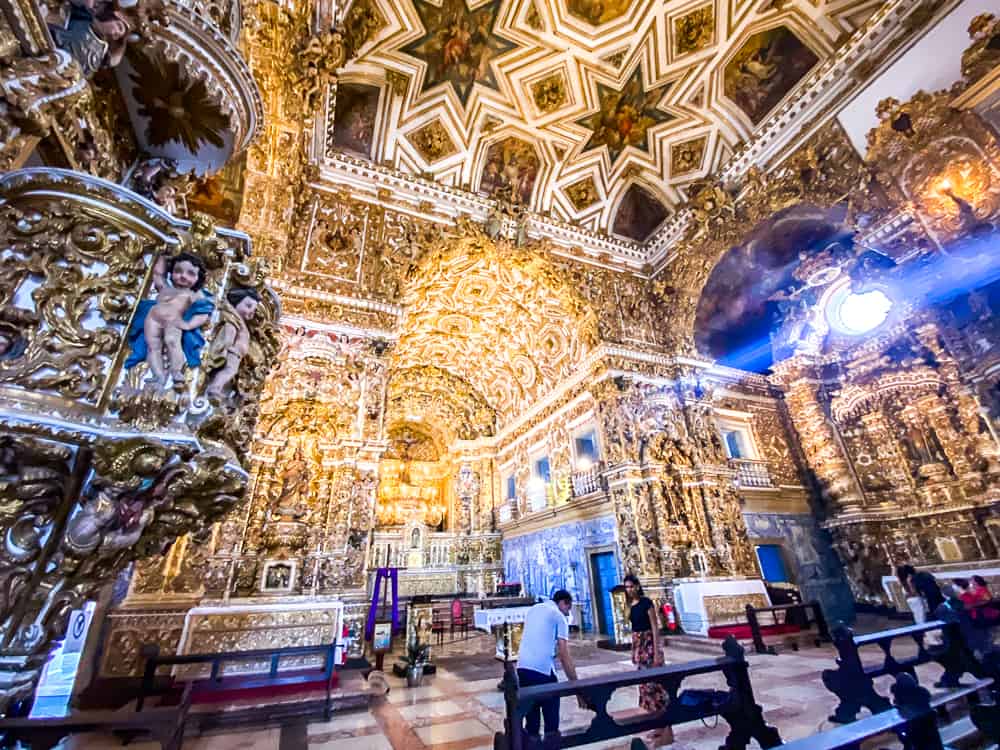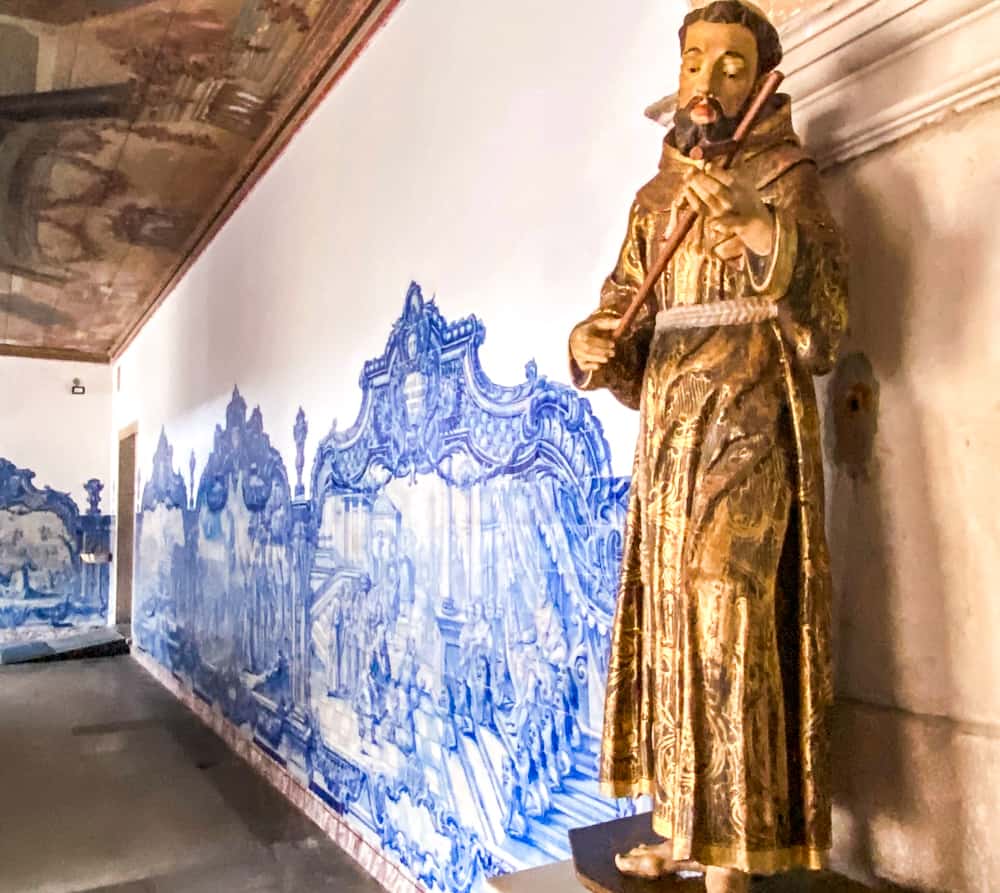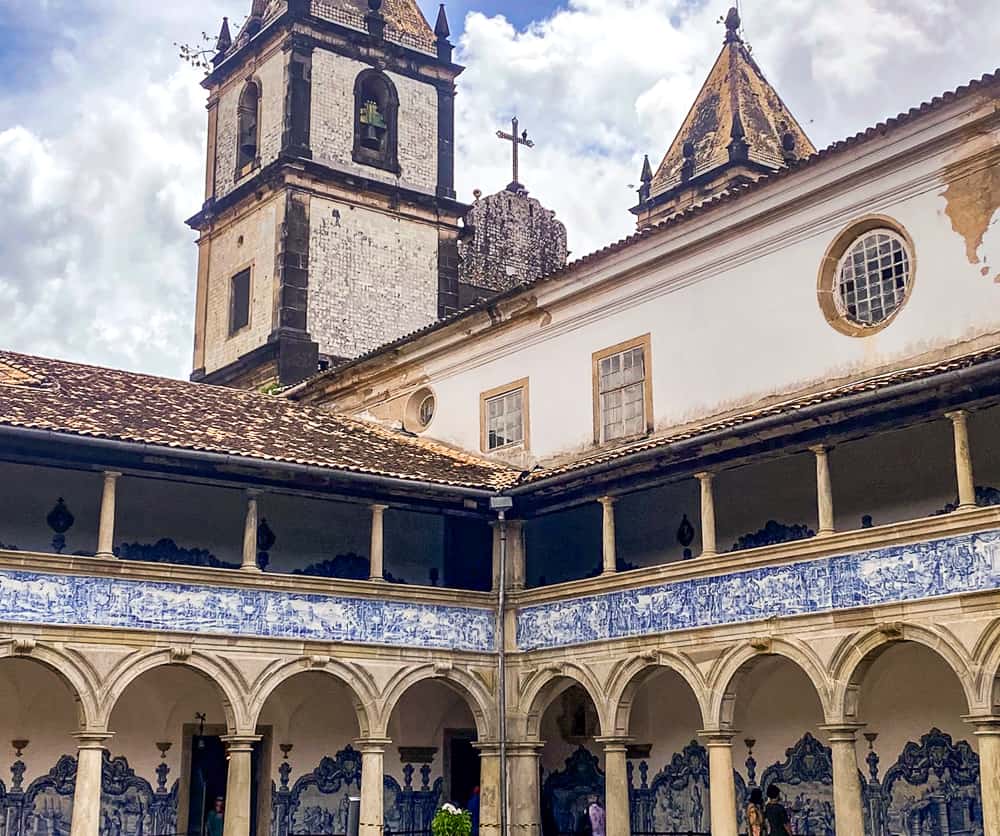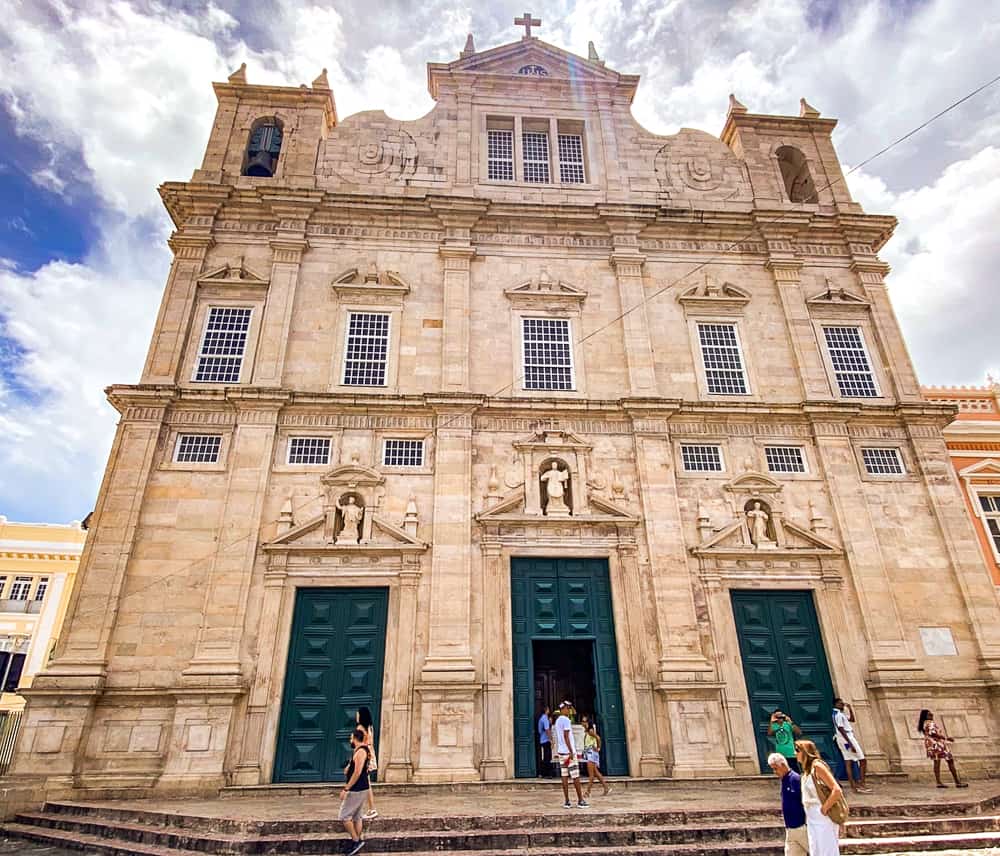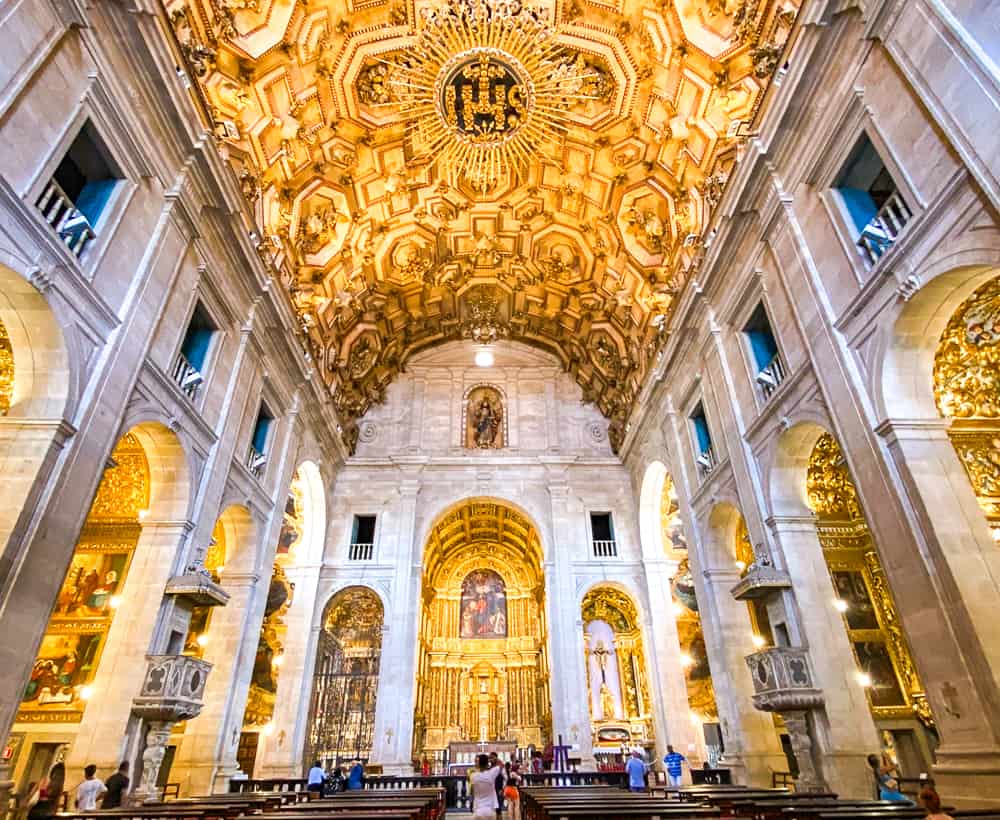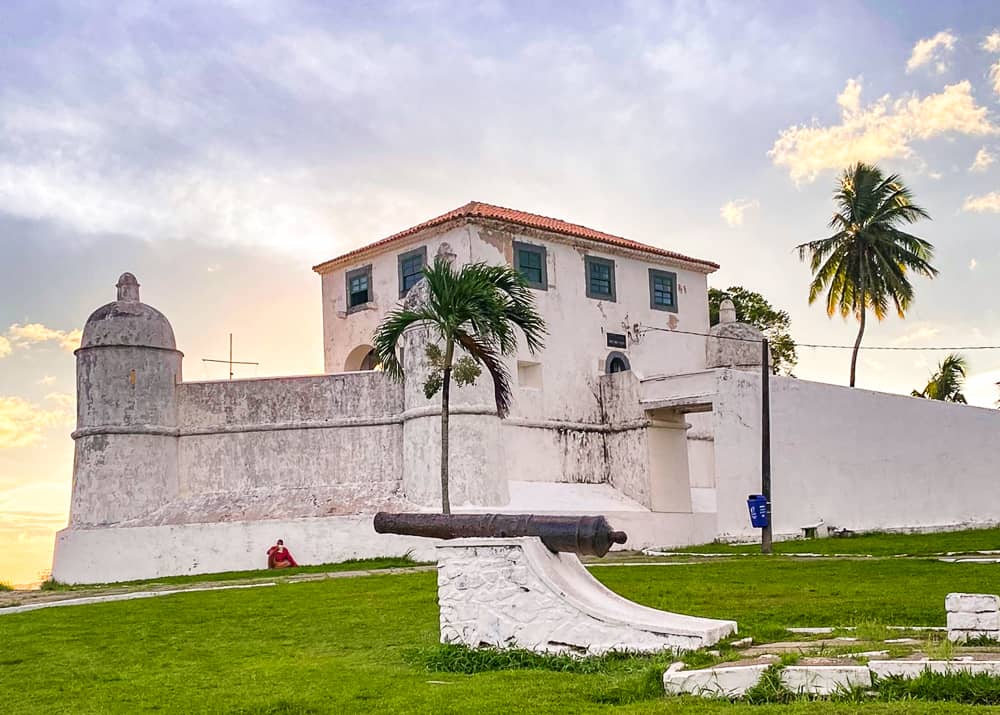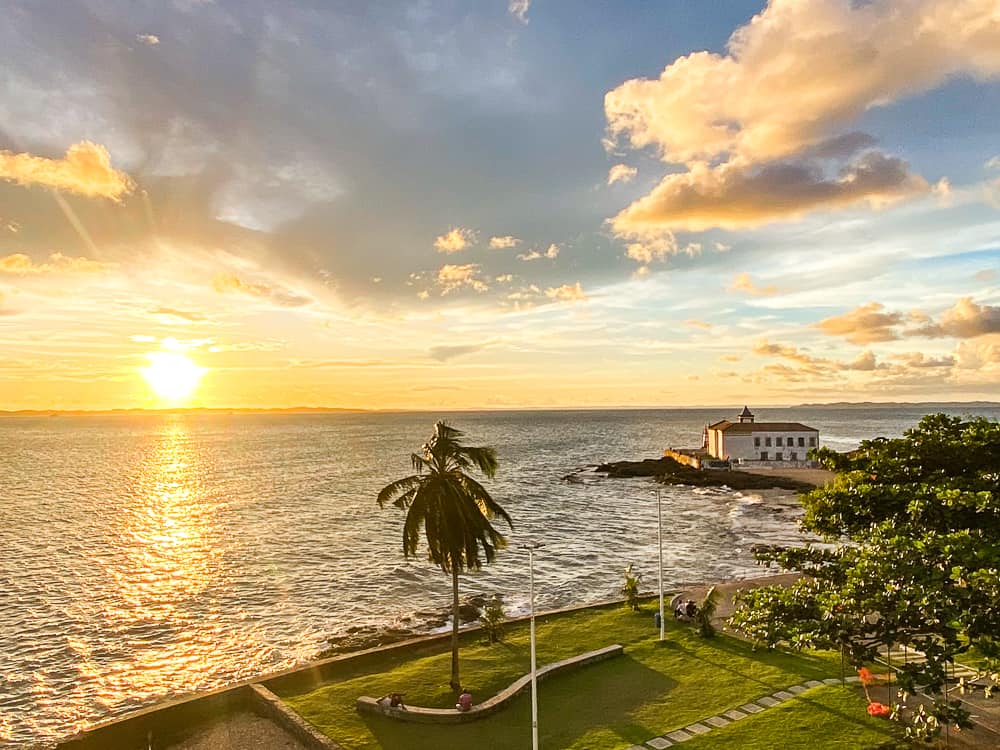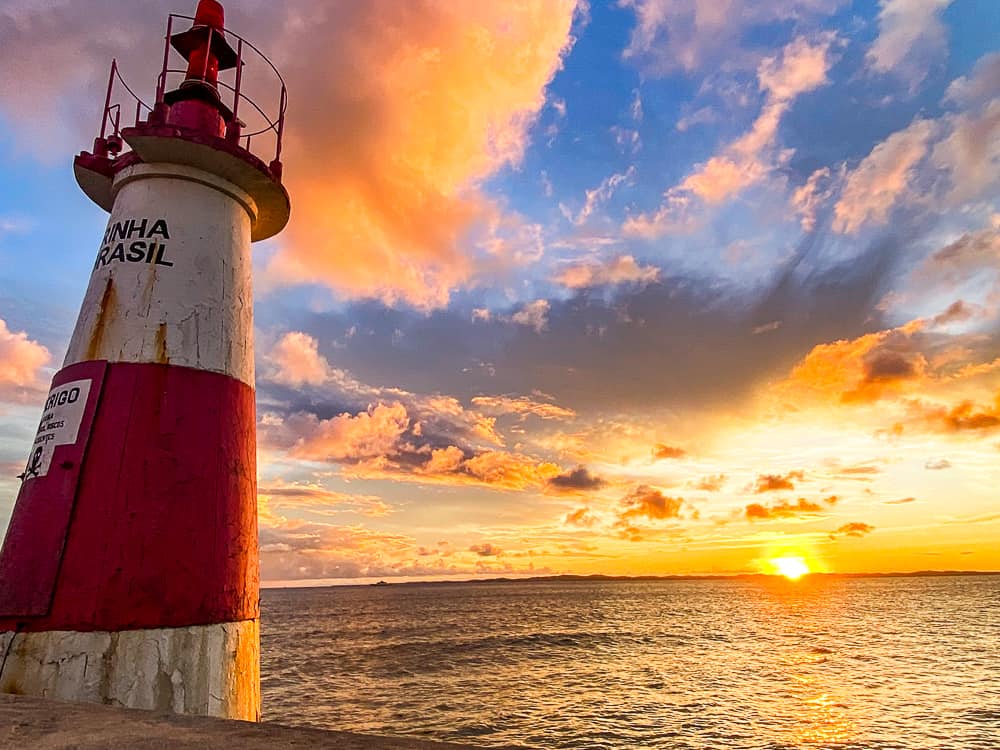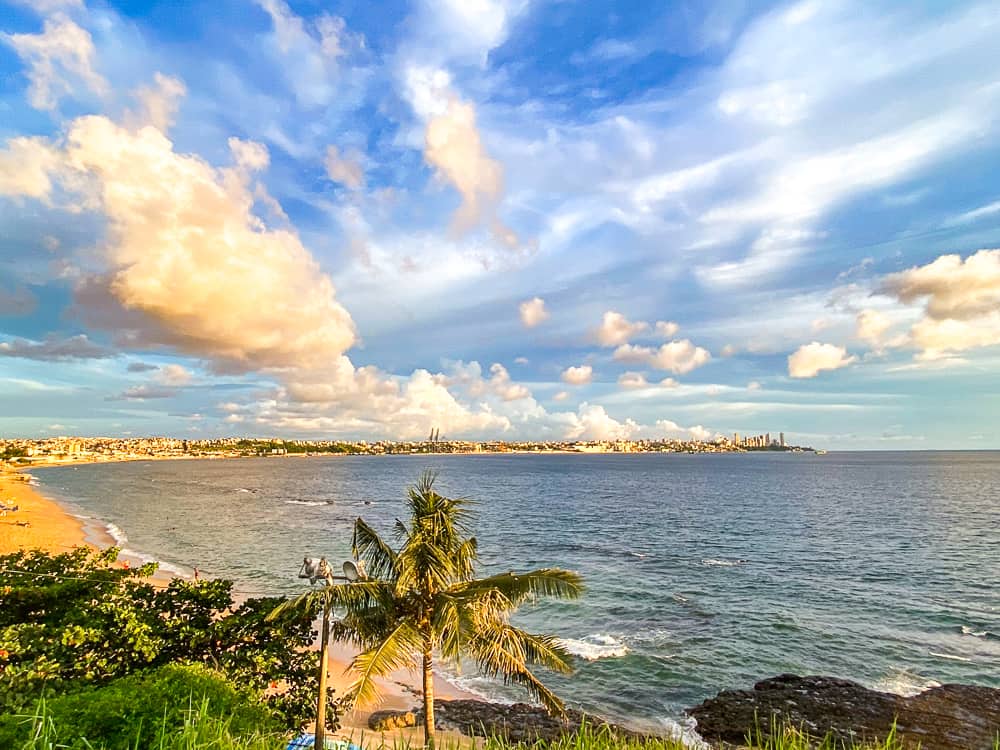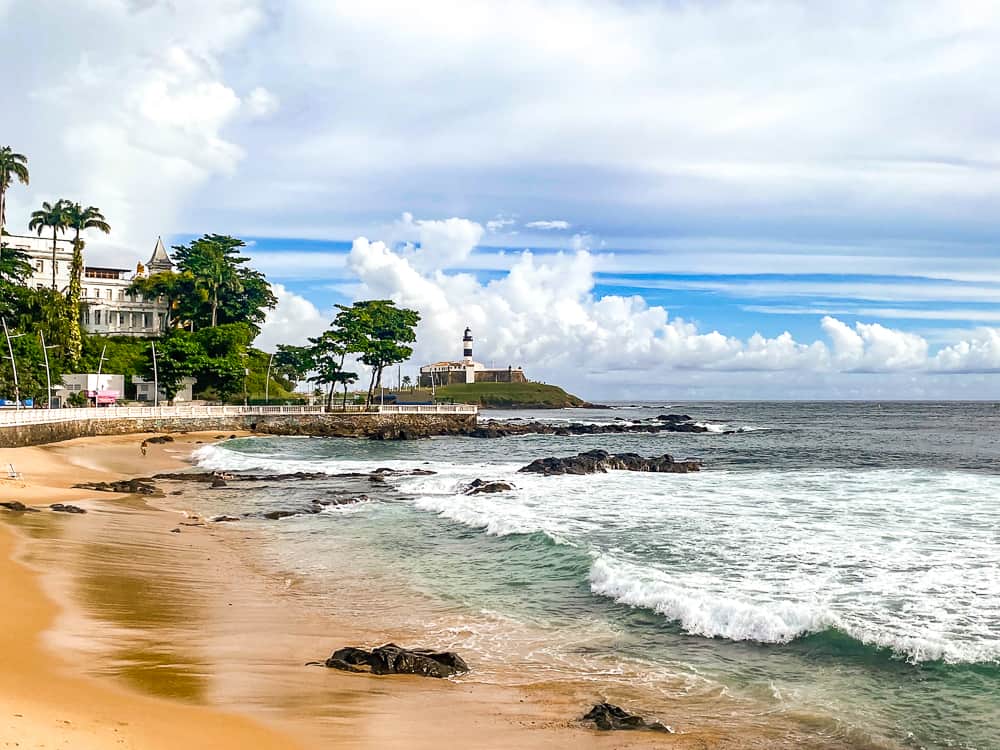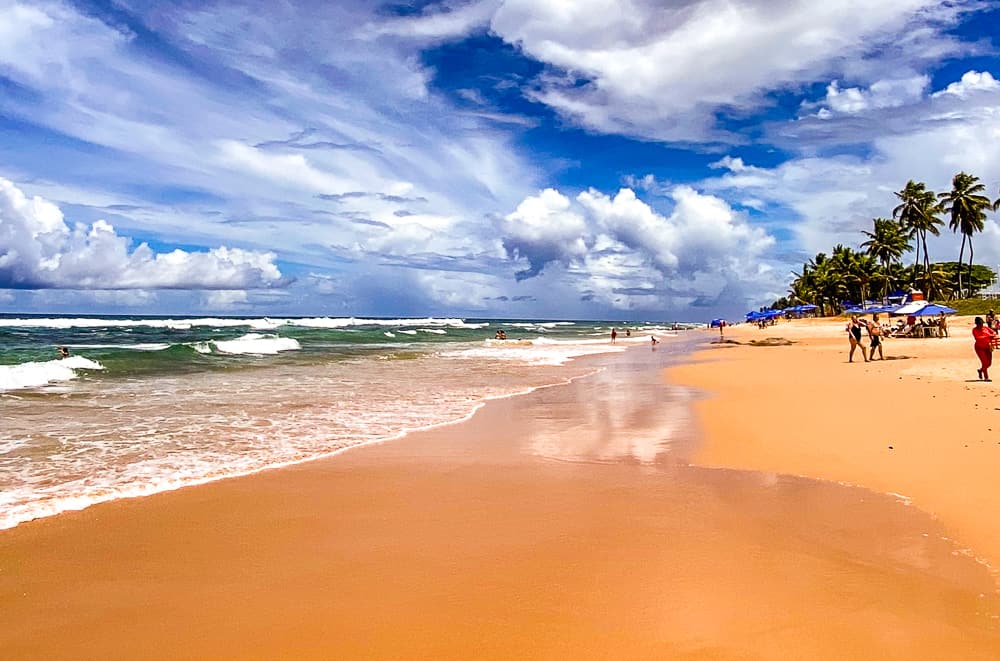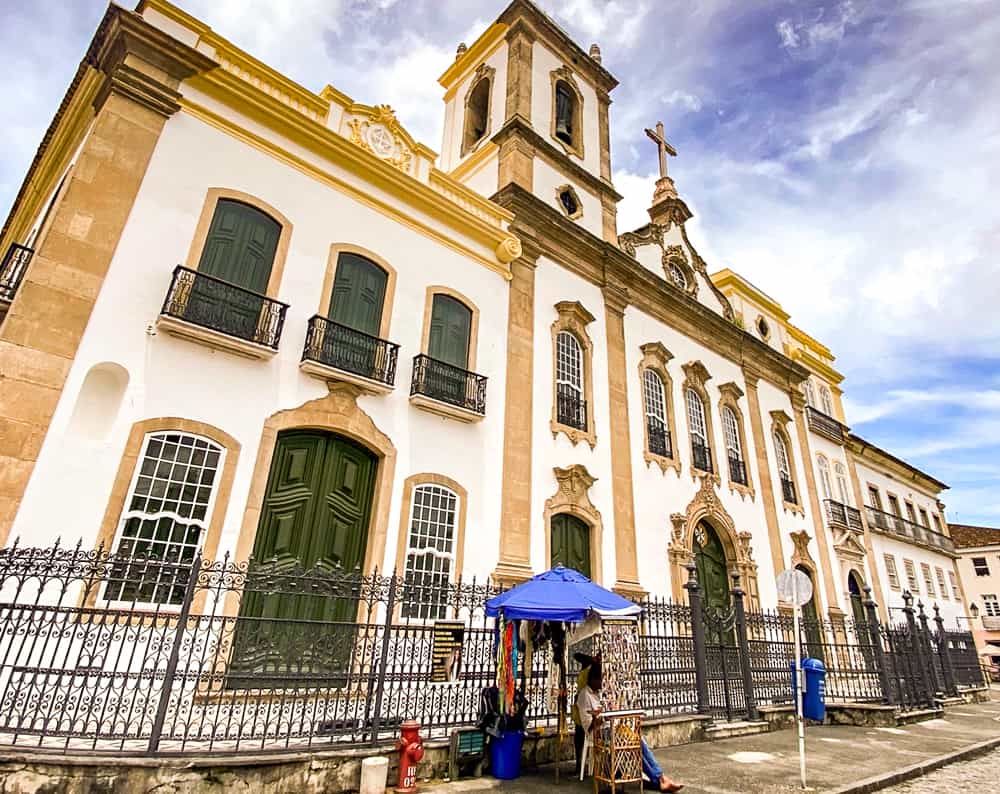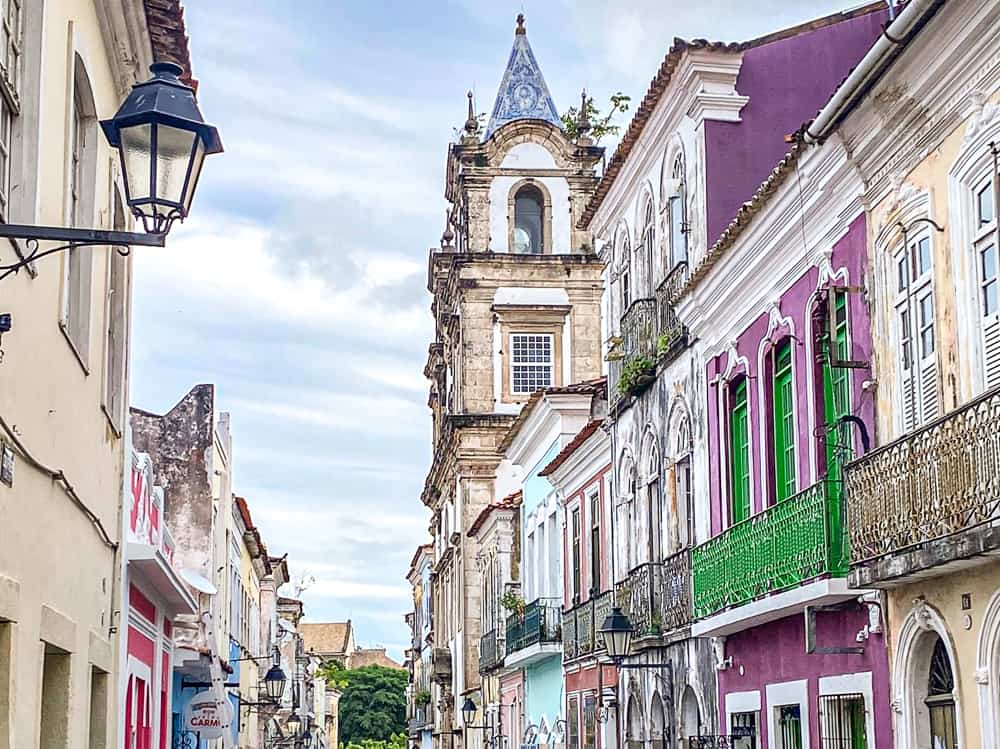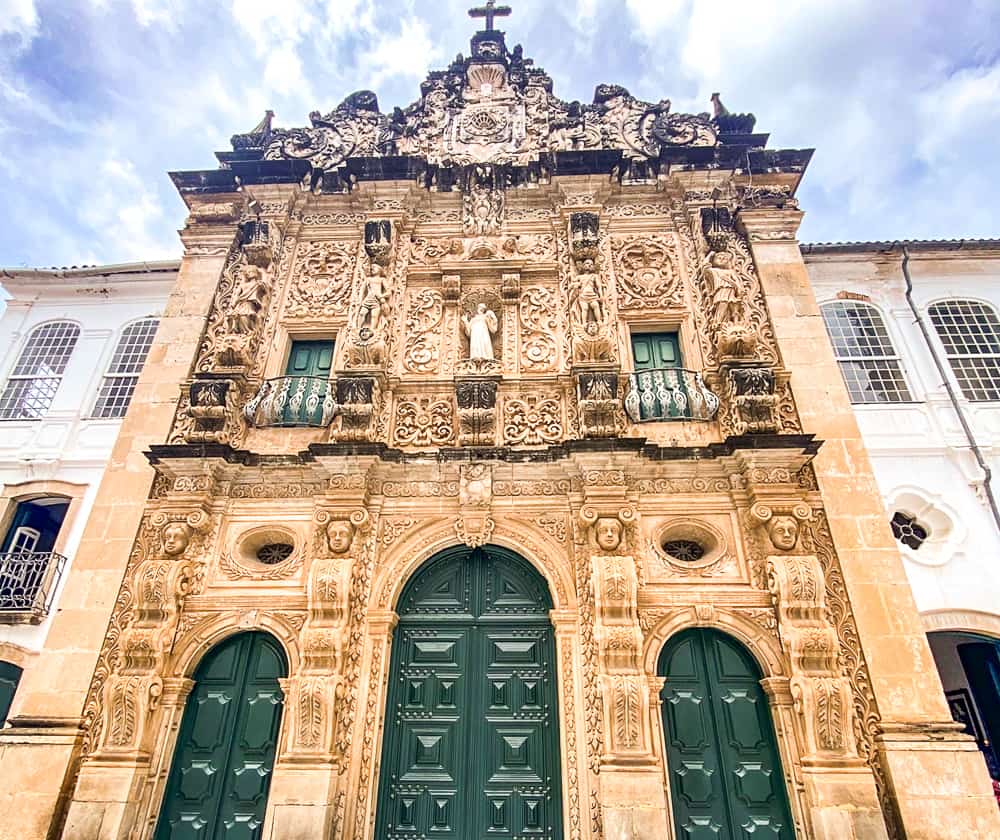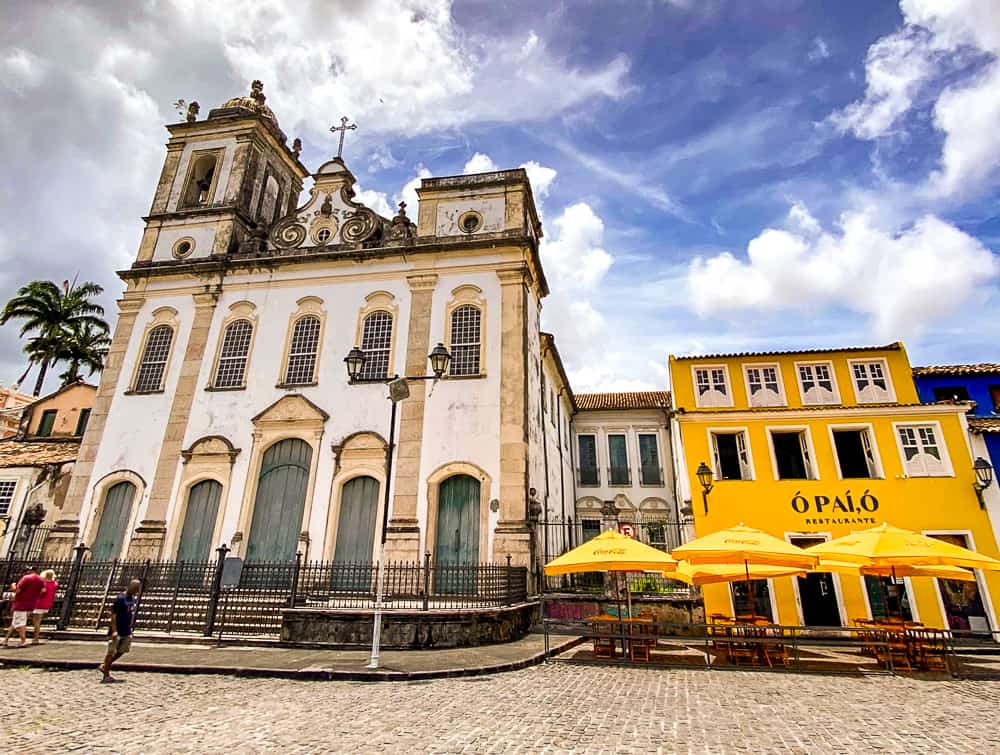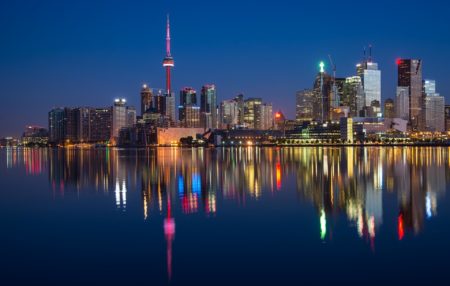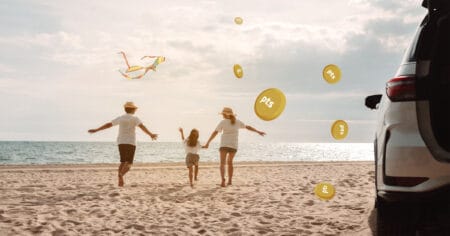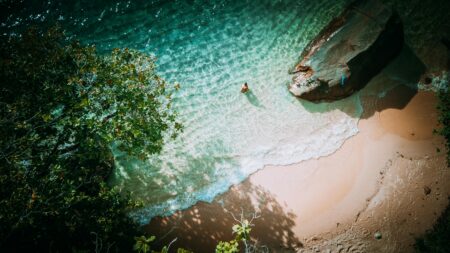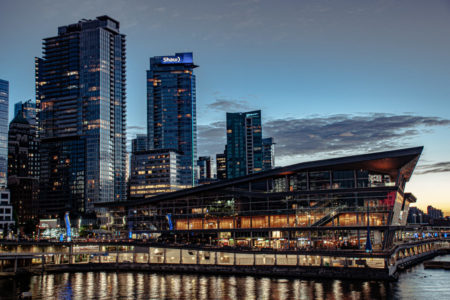Salvador de Bahia - Historical background
Now the capital of the state of Bahia, Salvador, located in northeastern Brazil, was founded by the Portuguese in 1549 and was Brazil’s first capital until 1763. It is one of the oldest colonial cities in the Americas.
As the cradle of the country, Salvador has been a meeting point for European, African and indigenous peoples. However, this merger did not take place harmoniously, as the city became a hub for slaves to develop sugar cane, tobacco, cocoa, coffee and cotton plantations, or for various jobs (mining, construction, farming, residences, churches), according to the needs of the metropolis and its proximity to Africa.
Nicknamed “Black Rome”, Salvador has become Brazil’s black capital, with the largest population of African origin in the country.
Although slavery is part of its history, the city has preserved a fine heritage, part of which is represented by its historic center, built during the Renaissance period and now protected by UNESCO. This is a great heritage of civil, military and religious architecture, dating from the 16th to the 19th centuries.
Salvador is made up of the upper and lower town. The lower town is the port area, which was an asset of the Portuguese empire during the colonial period, thanks to the trade links established with Portugal and the Portuguese colonies in Africa and Asia. Upper Town was the core of the colony and was also where many churches, residences and businesses were located. Goods were transported there by enslaved people.
Salvador de Bahia - Cultural and culinary heritage
The cultural heritage is one of the richest in the country, making Salvador and the state of Bahia unique places. Bahia’s musicians and writers are among the most important in Brazil, and many are internationally renowned, such as Gilberto Gil, Caetano Veloso, Gal Costa, Maria Bethânia, Carlinhos Brown, Ivete Sangalo and João Gilberto, among others.
Bahia’s cuisine has its roots in Portugal and Africa. Often spicy, the typical dishes are a delight for fish and shellfish lovers. The best known are :
- Bobó de camarão – shrimp, mashed cassava, rice and sauce made with coconut milk, onions, tomatoes and garlic;
- Feijoada Baiana – stew of black beans, pork, tomatoes, oranges and spices;
- Vatapá – shrimp stew with coconut milk and cashews;
- Moqueca – spicy fish stew served with shrimp.
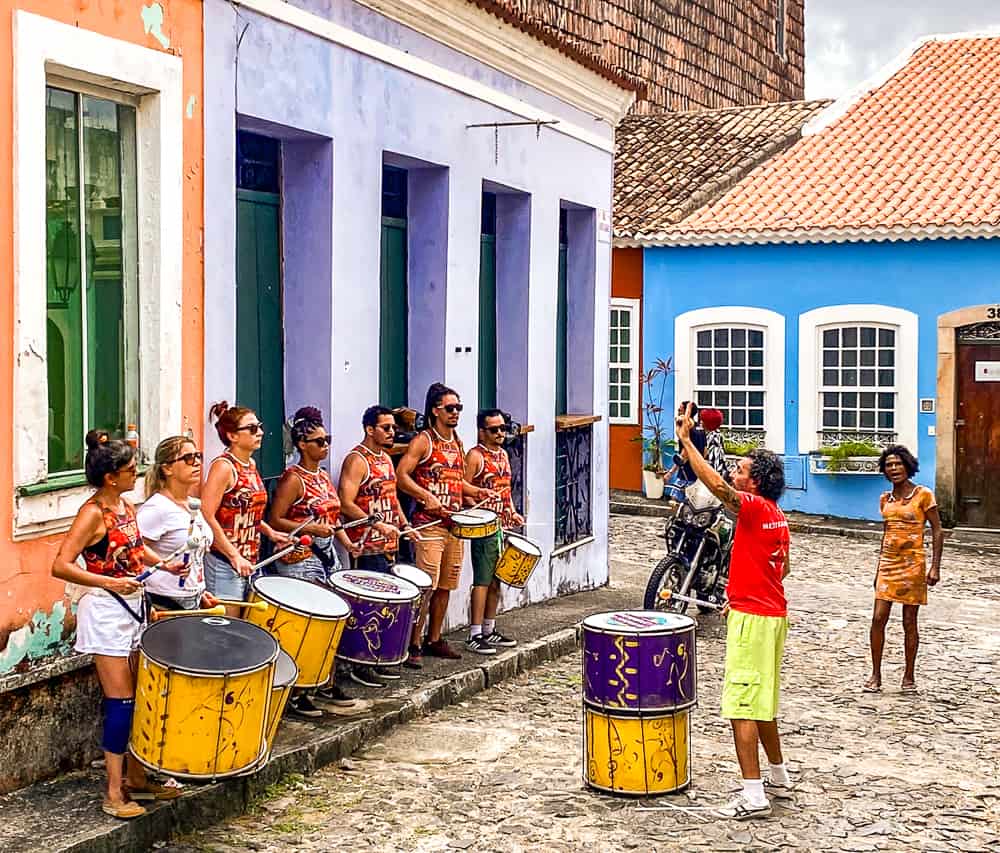
The best-known part of the historic center is the Pelourinho (little pillory) square, an area where enslaved people were tied to the pillory, to be punished (whipped and beaten) in public.
Interesting fact: Brazil was the last country in the Americas to abolish slavery, in 1888, after more than three centuries of horror.
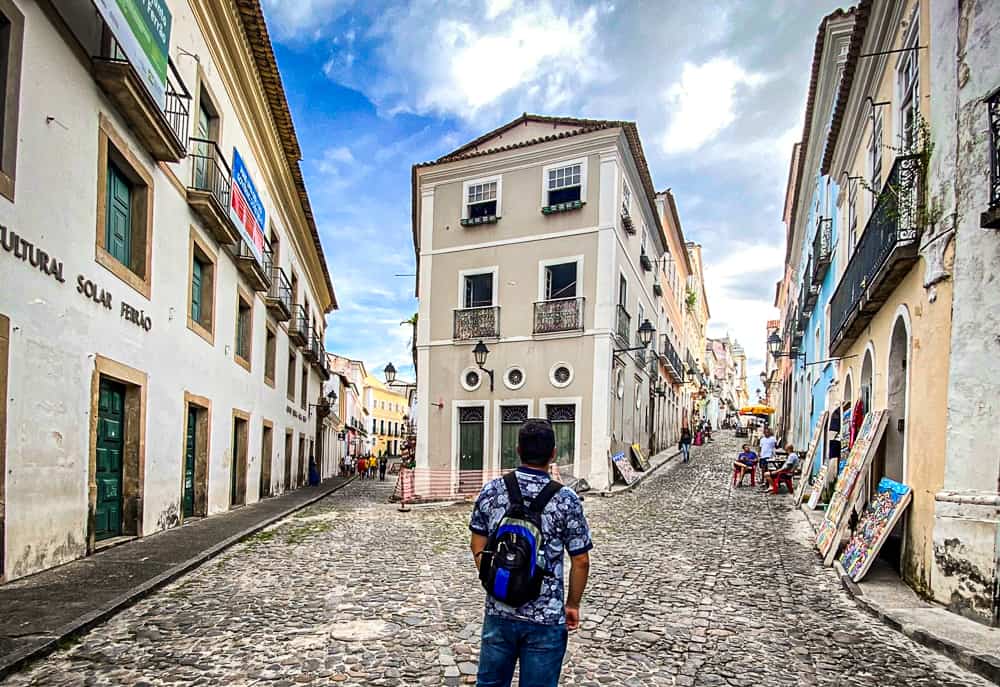
Salvador de Bahia - The city's tourist attractions
Salvador is currently Brazil’s third most populous city. It is considered the country’s second-largest tourist destination and hosts the second-largest Carnival, after Rio de Janeiro.
Thanks to its tropical climate, friendly people, beautiful beaches and Carnival, the state of Bahia is known as the land of happiness. You can read it in the shops and restaurants: Smile, you’re in Bahia!
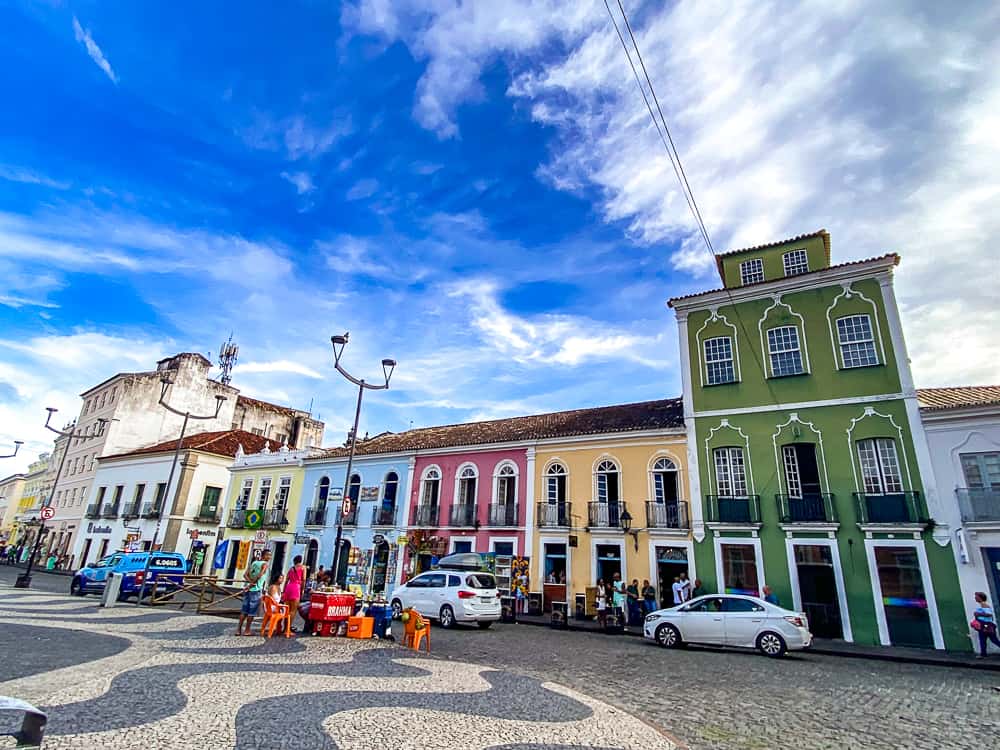
The city’s main tourist attractions are:
- The historic center, with its colonial buildings and Afro-Brazilian cultural expressions such as dance, capoeira, cuisine and music. The sound of drums can be heard throughout the historic center, especially in Pelourinho, the most famous part of the region.
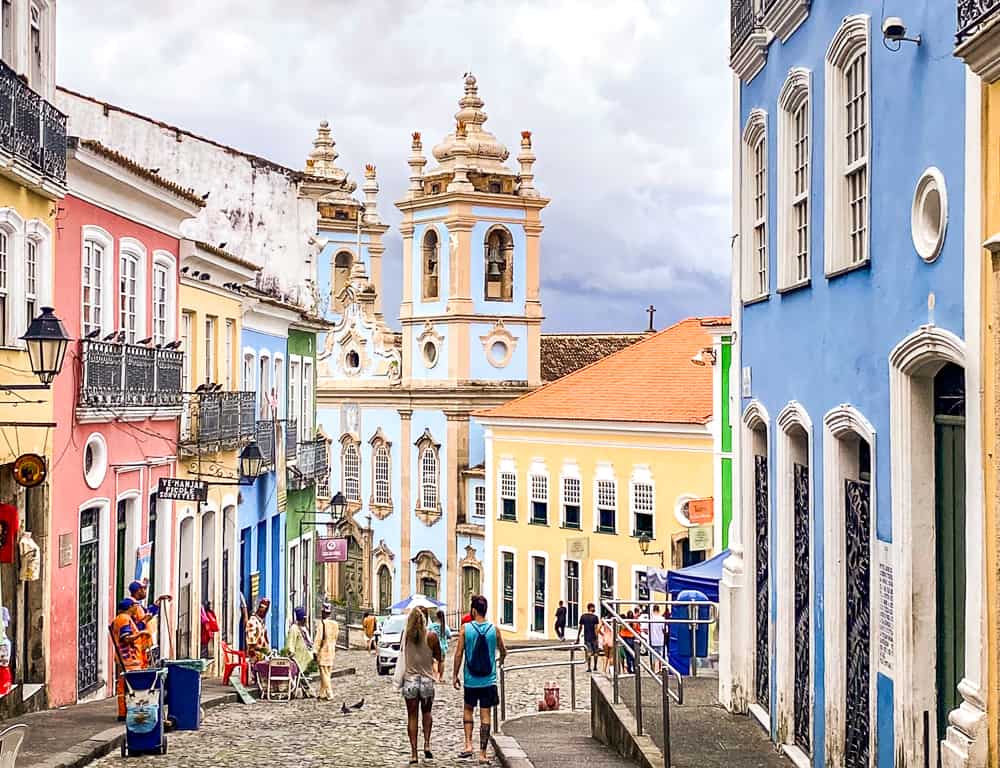
Some must-sees in the historic center:
- Place de la Sé (site of the city’s first cathedral, demolished in 1930);
- Terreiro de Jesus (cathedral square, near several churches, stores and restaurants);
- Pelourinho (heart of the historic center, where Salvador’s best-known photos are taken);
- Foundation of the Jorge Amado House (museum in tribute to Bahia’s greatest writer);
- Monument to the Fallen Cross (erected in 1999 to celebrate Salvador’s 450th anniversary);
- Olodum percussion group practices every Sunday and Tuesday.
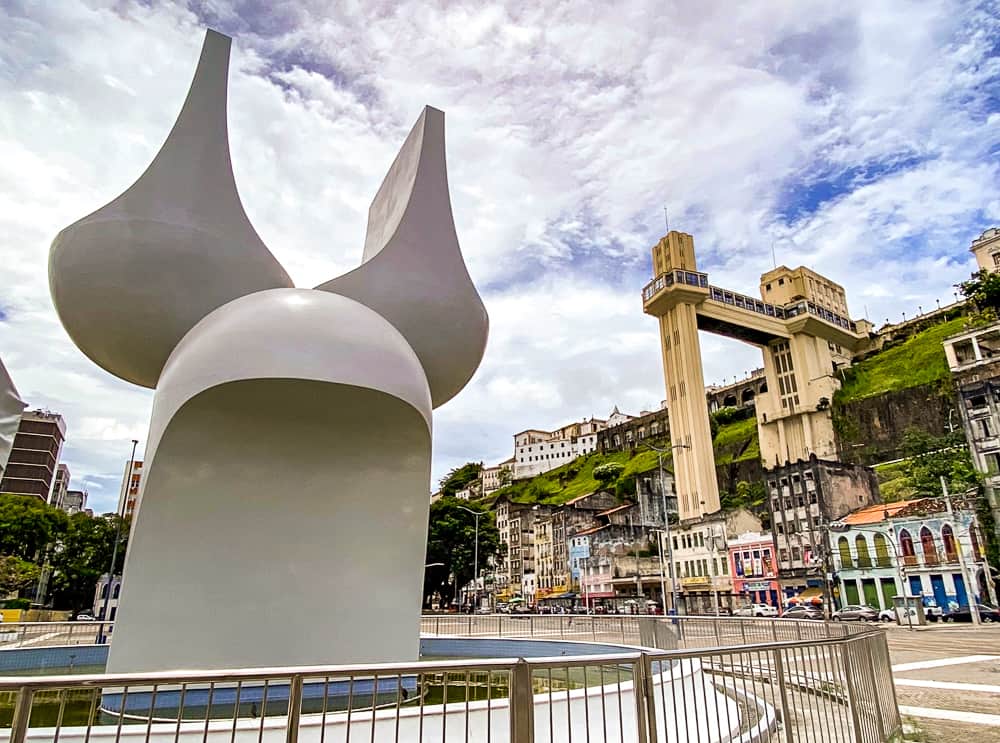
- The Lacerda elevator, built between 1869 and 1873, links the upper and lower town. Uptown, the view of the elevator and of the Bay of All Saints is an emblematic image of Salvador.
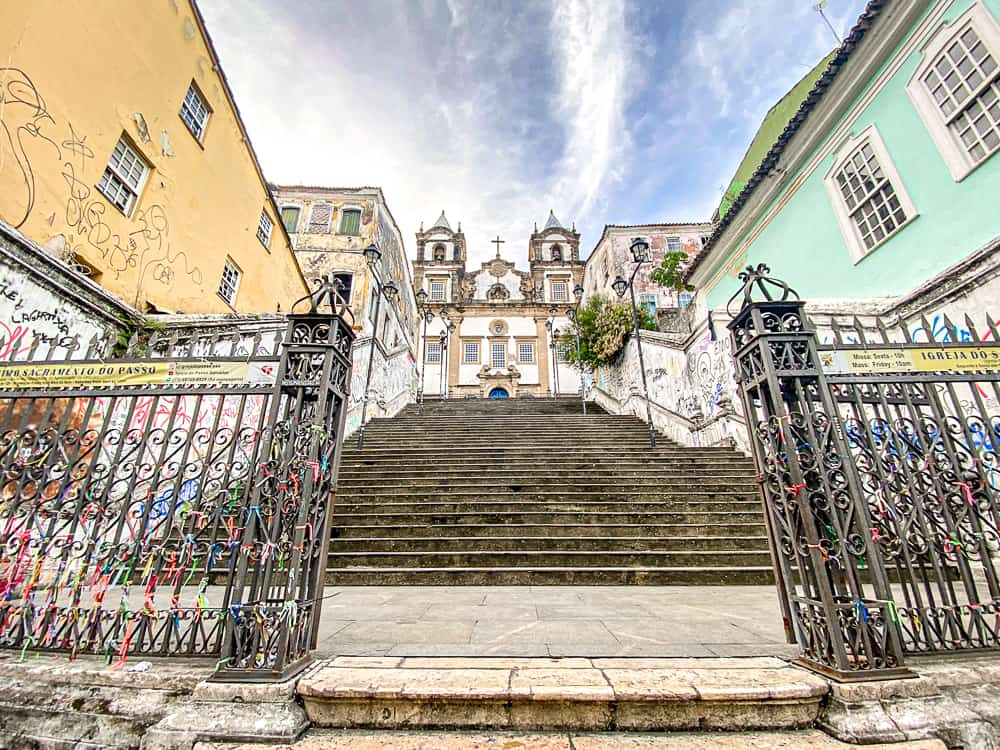
Religious heritage
Salvador has almost 400 Catholic churches and several temples of Afro-Brazilian religions, such as Candomblé. The most famous churches are:
- Basilica of Notre-Seigneur-de-la-Bonne-fin, the city’s most emblematic church. The famous colorful ribbons that are sold and given away all over town pay homage to Bahia’s patron saint. Wrap them twice around your wrist, make three wishes and three knots. When the ribbon breaks, the wishes will be granted.
- Church and convent of Saint-François d’Assise;
- Salvador Cathedral;
- Church of the Third Order of Mount Carmel;
- Church of the Blessed Sacrament and its stairs (penitential path);
- Saint-Benoît Abbey;
- Church of the Third Order of Penitence of São Domingos
- Church of Saint-Pierre-des-Ecclésiastiques;
- Church of the Third Order of Our Lady of the Rosary of the Black People
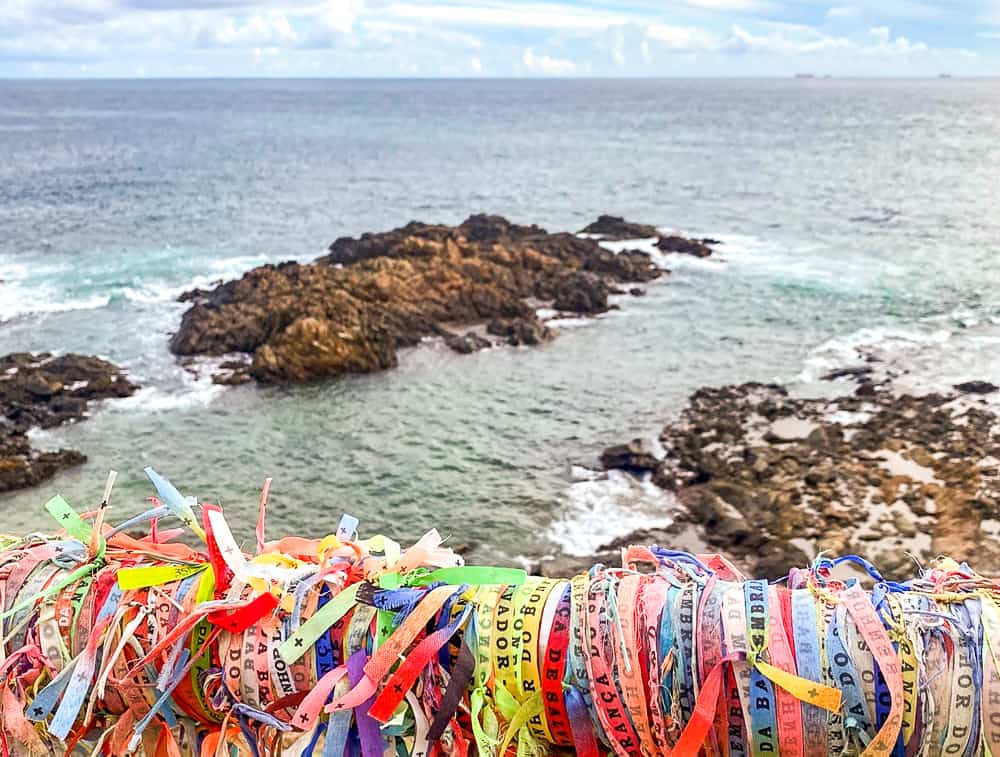
Some churches, such as the Church of Our Lord of Bonfim and the Third Order of Our Lady of the Rosary of the Black People, are of great importance to both religions.
Other must-sees
Other tourist attractions:
- The Tororó dam (artificial lake near the Fonte Nova stadium, where we can see the statues of the Orishas);
- The Modelo market is located in the lower town, opposite the Lacerda elevator. It’s a great place to buy souvenirs.
- Barra lighthouse: the current lighthouse, dating from 1839, is the second one to be built on the site. The first was built from clay in 1582, for the expansion of trade and slavery in Bahia.
It’s one of the symbols of the city, along with the Lacerda elevator and the Pelourinho.
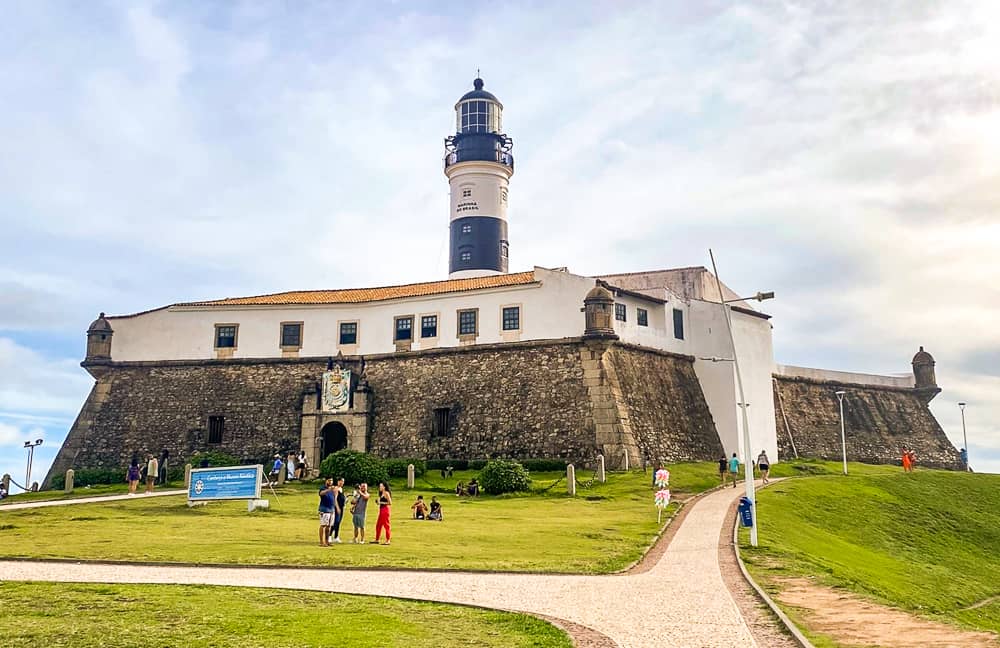
- Christ Mountain: a statue of Christ on a hilltop near the sea. This location offers a beautiful view of the beach and of the Barra lighthouse;
- Rio Vermelho district: There are several bars and restaurants for those who want to enjoy a night on the town;
- Enjoy the sunset at Mont-Serrat Fort or Humaitá Point and taste an ice cream at Sorveteria da Ribeira, which offers over 40 flavors, from which many are made from fruits you’ve never heard of;
Beaches
- Urban beaches visited:
- Porto da Barra beach, protected by the Bay of All Saints, is the most accessible to tourists and locals alike. This is why it’s so busy, and why there’s so much solicitation from vendors;
- Barra beach, a little less busy, is already part of the Atlantic Ocean. Caution is advised due to strong currents;
- Stella Maris beach, further from town, is quieter. There are fewer vendors and the customers are often those from local hotels. The sea is warm and calm at low tide, but you have to be careful at high tide, because of the currents and rocks.
Salvador de Bahia - Plan your trip
Recommendations
This multicultural, musical, colorful, open and welcoming city is also a major metropolis with its own challenges. There’s plenty of police surveillance in the historic center, but it’s always advisable to take safety precautions and use common sense, to avoid problems that could spoil your trip.
To help you feel safe and better understand its rich history, I strongly recommend that you use the services of a guide on your visit. With ours, we were never solicited on the streets and we felt comfortable taking photos and visiting shops and restaurants without feeling threatened or ripped off.
Our guide, found on Tripadvisor, is Edvaldo Gomeia (@edvaldogomeia). Considering the positive feedback, we felt comfortable contacting him. He doesn’t speak French, but must know guides who do.
You can also book tours and guided experiences privately with ToursByLocals or in groups with Civitatis and Viator.
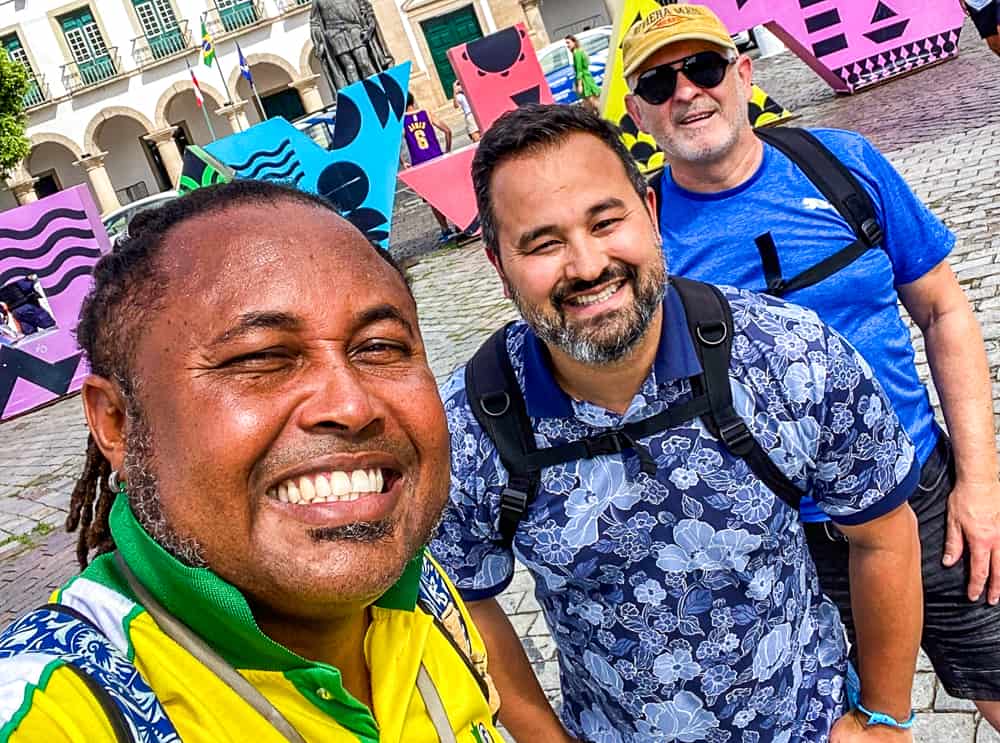
Salvador is a city that can make you feel many kinds of sensations, including a strong culture shock, especially due to the social inequalities. Prepare your mind, be able to say no or to ignore solicitations, pay attention to your surroundings and to what you eat, and it will be possible to enjoy your stay in this city, which is one of the most important ones in Brazil, for all the reasons mentioned above.
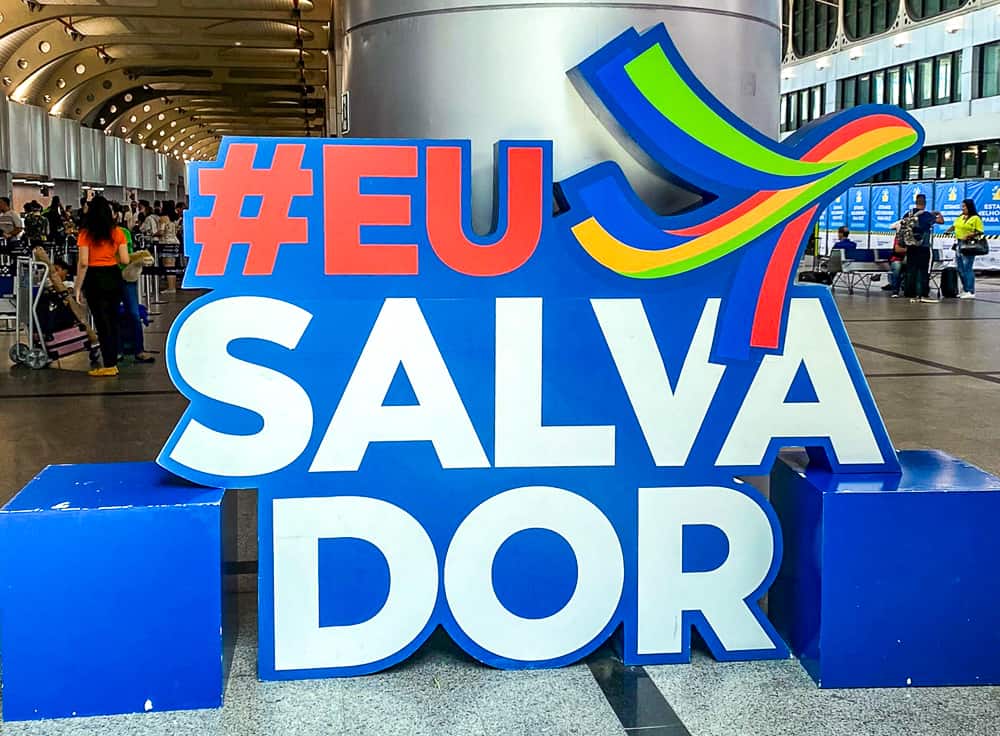
Transportation options include cab, pre-paid cab, Uber, private shuttle, bus and metro.
We used Uber, but the pre-paid cab option can also be a safe option. The bus and metro options are not recommended for tourists, unless it’s really a low-budget trip.
We don’t recommend car rental in Brazil’s major cities, but for those who do go for it, there are several options.
How to get there with points
Salvador is accessible from several Brazilian cities with LATAM (part of the SkyTeam alliance), GOL (accessible with AAdvantage) and Azul (accessible with Aeroplan), as well as a number of regional airlines.
We bought our outward ticket with LATAM (Canada site) and the return ticket with Gol (via Expedia, as we weren’t able to buy directly on their site). It’s also possible to book a direct flight from Montreal to Sao Paulo with Aeroplan points, and then book the flight of your choice in cash (or with points from another program) to Salvador de Bahia.
International airlines offering scheduled flights include: Aerolineas Argentinas, Air Europa and TAP. The international airport (SSA) is 28 km from the city center.
How to pay for your stay with points
There aren’t many international hotels. The majority are Brazilian chain, independent and boutique hotels set in historic houses.
We spent 2 nights in a boutique hotel in the historic center and 3 nights in a beach hotel to relax after walking the cobbled streets of the historic center. The reservations were made with Booking and we used CIBC AventuraMD Visa Infinite* Card points to then get a statement credit.
It’s very hot in Salvador. Be sure to book air-conditioned accommodation.
Water is not drinkable in Brazil, so we recommend buying bottles.
Credit cards are widely accepted, but it’s a good idea to carry some cash. We used the HSBC World Elite® Mastercard®, to save on conversion fees. With this card now discontinued, the Scotiabank Passport™ Visa Infinite* Card is an excellent alternative to avoid conversion fees.
After visiting Salvador, many people continue on to the north or south coast, but we didn’t, simply because we didn’t have enough time. We’ll certainly do it again, as these picturesque villages are well worth a visit!
Read on with these travel guides to Brazil:
